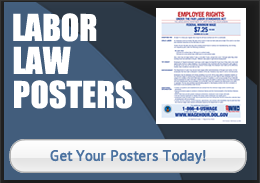Complete Story
10/17/2019
Is Your Business Ripe for Disruption? How to Tell
Source: Fleet Management Weekly
In the world of business, disruption is more than a buzzword, it’s a fact of life for most companies.
According to Accenture, a global consulting company, 71 percent of the 10,000 companies around the globe it analyzed last year for its second Disruptability Index were in the throes or on the brink of significant disruption brought on by technological innovations, new competitors, new regulations, and by social, cultural or demographic shifts. So, it’s likely that yours is one of them. What’s more, Accenture found that none are entirely free of some level of current or potential disruption.
Currently being significantly disrupted
Accenture’s index scores 18 industry sectors on a four-square graph that measures the extent to which they’re already grappling with some degree of disruption and the degree to which they are susceptible to disruption in the near future.
The results? Six sectors are already experiencing high levels of disruption. In descending order, they are Communications and Media, Retail, Infrastructure and Transportation services, High Tech, Insurance, and Consumer Goods and Services.
While Accenture found that none of the sectors is completely free of disruption, those least currently affected, in ascending order, were Chemicals, Health Care, Capital Markets, Natural Resources, Utilities, and Industrial Equipment and Machinery. That leaves six sectors that are near average in the extent to which they are now undergoing disruption: Software and Platforms, Banking, Life Sciences, Automotive, Travel, and Energy.
Most vulnerable in the future
There’s a fair amount of overlap in Accenture’s scoring system because its assessment of the degree to which sectors are currently being disrupted overlaps with the amount of vulnerability to future disruption. Ten sectors considerably above average in future vulnerability include Insurance at the top, followed by Banking, Capital Markets, Infrastructure and Transportation Services, Natural Resources, and Consumer Goods and Services.
In its commentary on the index, Accenture noted:
“Between 2011 and 2018, 3,217 U.S. companies from across the 18 sectors went bankrupt. Retail, which was especially volatile from 2011 to 2018, saw 43 corporate bankruptcies just in 2018.
“Both the Consumer Goods and Services and Retail sectors saw over a 30% increase in their level of disruption between 2011 and 2018. This was based on an almost 500% increase in the number of unique [venture capital] deals between 2011-18, with total [venture capital] funding of just under $12 billion in 2018. These are jarring stats. For the leaders living out these trends, they represent true upheaval.”
Signs to watch for
Accenture notes that disruption is unpredictable, and established companies are often caught by surprise when it happens. What they need to help prepare for disruption is a list of industry characteristics that can serve as warning signs that disruption is fast approaching. Expert innovation consultant, Dan Toma, has a rundown of the signs:
1. Consolidation at the top. One of the most important signs that an industry could be ripe for disruption is consolidation at the top. Oligopolies, where a few companies have consolidated vast amounts of the market share on either on the supply or demand side, are good examples.
Airbnb first became profitable during the second half of 2016, and its revenue grew more than 80% from 2015 to 2016. Coincidentally (or not) in the same year consolidation in the hotel industry started ramping up too.
Based on this observation, one can conclude that the automotive industry’s legacy business model – car ownership – is about to get disrupted by a new business model, “cars as a service”. Consolidation at the top in this sector has just begun with the deal the two archrivals Daimler and BMW signed for car-sharing services.
2. Complaints about poor customer experience. This usually happens in industries where the consumer has no other option but to stay with the corporate legacy provider out of necessity and the lack of options. The taxi industry is a perfect example of this stagnation, and was precisely in this situation when Uber emerged, offering a real, convenient alternative.
3. Lack or loss of customer insight. Lacking or losing insight into their customer’s needs and preferences can very well spell the beginning of the end for some companies. In an era where data is the new oil, companies that lack [rich customer data] or no longer have access to it will severely affect their ability to build new products, innovate and meet evolving digitally advanced customer needs.
4. Opaque cost structure. This pattern is more often seen in, but isn’t limited to, industries in which a good or a service exchanges multiple hands before making it to the end consumer. Generally speaking, the middlemen add little to no value to the consumer but has a significant effect on the final retail price.
An example is the mattress industry, where the startup Casper disrupted most of the industry with a direct-to-consumer business model. To some extent, Tesla did the same to the auto industry, using a direct-to-consumer business model, unlike players in the industry stuck in their archaic dealership model.
5. Regulatory barriers to entry. Complacency is often a characteristic of highly successful companies that are heavily regulated. An example is the telecommunication industry, where the offspring of AT&T long felt safe under a legacy regulatory umbrella. That bred a complacency that led them to overlook how new technologies could disrupt their bread-and-butter offerings.
Companies like WhatsApp, that didn’t fall under telecom industry regulations, took advantage of a sleepy industry to render big telecom’s mainline services obsolescent, if not obsolete. Today, with its free messaging and voice over internet protocol (VOIP) for video phone services, WhatsApp is emerging as a dominant player in the global telecom market.
6. Legacy players relying on outdated IT infrastructure platforms. Established companies often find themselves saddled with outdated IT infrastructure, which is so widespread and ingrained in their operations that they’re reluctant to rebuild it. By comparison, start-ups are free from those constraints, precisely because they’re starting from the ground up with the latest technology.
In the banking industry, for example, new entrants like N26, Chime, and Monzo pose a real threat to incumbents because they have been able to build the digital-only, mobile banking product that customers want without having to worry about a legacy infrastructure.
No company is immune
This is a short list, but it can lead to powerful insights. As stated at the start of this article, no company is completely immune to disruption – it’s just a matter of degree and time. It’s up to every business leader to determine his or her company’s ultimate fate: is it a disruptor itself or is it destined to become one more casualty?





